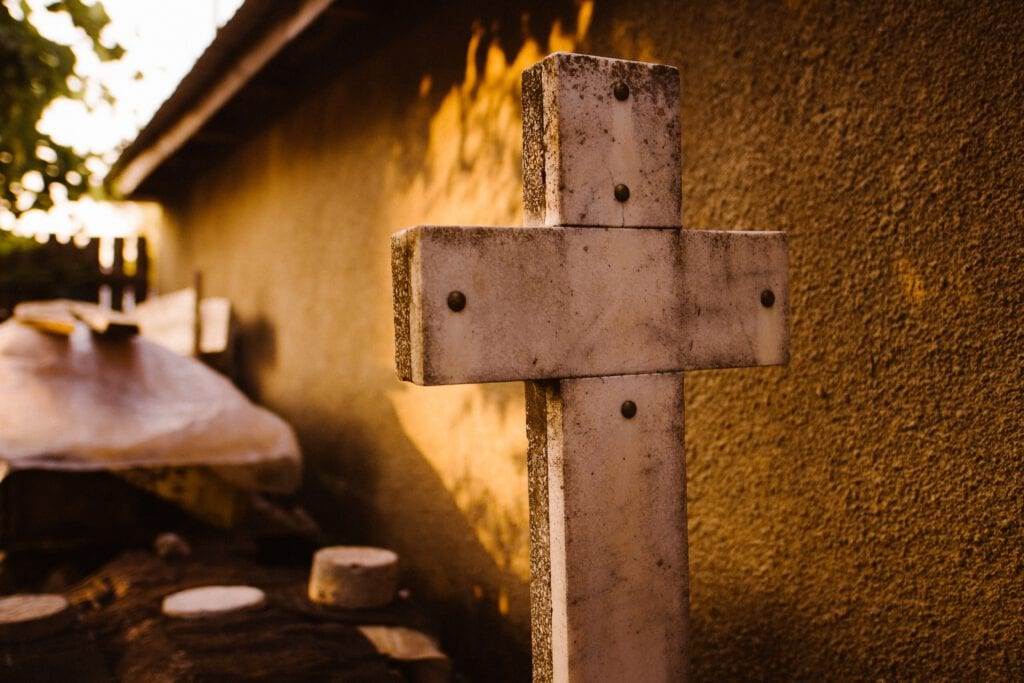Whether you want to discover something new in the Netherlands, find mummies without travelling to Egypt, or simply spice up your summer stay-cation, Mummiekelder — located in the province of Friesland — is the solution.
Friesland is what usually comes to mind when one thinks of the Elfstedentocht. Located up north in this tiny land, it is the only Dutch province that is officially tweetaalig (bilingual). Friesland has a rich heritage and tales of valour against the Vikings but its rustic countryside hosts more than just photogenic scenery. There is also a Halloween-worthy tidbit, buried in a Frisian village. So, let’s indulge in a little flashback.
Background story
Back in the 15th century when people were God-fearing (or at least more religious than they are now), a rich family called the Waltas lived and owned several properties in and around the village of Wiuwerd, Friesland. In 1609, wishing to be even closer to God, they decided to build a crypt under Nicolaaskerk (Nicholas Church), which would later become their final resting place. As time went on, the aristocratic family and their wealth deteriorated.
A few decades later, spreading the cult of Christianity, the French Pietist Jean de Labadie and his pupils settled down in Wiuwerd and parts of Middelburg. After Labadie’s death, the Labadists stayed on and set up a community of about two hundred people in the Walta Castle, practicing crafts, farming, milling, teaching in communal schools, and printing religious books.
History and mystery
Fast forward to 1765 — a bunch of carpenters was summoned to Nicolaaskerk to work on wood carvings when one of them stepped into the underground vault. What he saw was scary as death — in the crypt lay corpses. Although dead and buried long back, the seven corpses looked like they had just perished and were still dressed in their best! Were they the undead?! The frightened carpenters ran for their life.
In an age when nobody is even remotely scared of Dracula and his cronies and where vampire romances are, in fact, bestsellers, the discovery of these mummies is still a mystery. How could this Mummiekelder (Mummy cellar) house three-centuries-old corpses in a pristine condition when they were never embalmed? There are many rumours.
Those with a scientific background attribute it to perfect climatic conditions in the cellar, high humidity, and continuous airflow. However, none of these factors have actually been proven to be the reasons why the bodies were preserved so effectively.
Not all of these natural mummies that were originally found still exist today though. Two were taken to the former University of Franeker where they decomposed and were then returned in boxes. One was apparently stolen and taken to America, and there are wild stories about what French soldiers did to another corpse during the war.
Where are they today?
What is left are the bodies of a teenaged girl who succumbed to tuberculosis, an old lady who died a natural death, a goldsmith, a man killed by a jaw abscess (thank God for present-day antibiotics), and, of course, several stories to crank up the spook factor on dark and stormy nights! Curious? Here’s a little sneak peek into the crypt.
If you wish to see these mummies in person, hurry to Nicoolaskerk, or head over to Mummiekelder first for more details. Tours are conducted between April and October.
Have you heard about the Mummiekelder before? Let us know in the comments below!
Feature Image: DutchReview/Canva





I was here in 2013 during a visit from Canada. My relatives brought my daughter and I during our visit. Friesland is the province my father is from